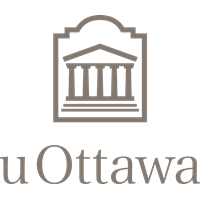Below is a summary of the abstract you submitted. Presenting author(s) is shown in bold.
If any changes need to be made, you can modify the abstract or change the authors.
You can also download a .docx version of this abstract.
If there are any problems, please email Dan at dar78@pitt.edu and he'll take care of them!
This abstract was last modified on May 20, 2025 at 10:35 a.m..

A member of the L4 cluster, the mycobacteriophage Bromden contains 118 protein coding genes, of which 67 (57%) have no known function (NKF), and 13 tRNAS. Each Bromden gene was cloned and overexpressed in Bromden’s host, Mycobacterium smegmatis mc2155. Thirty-seven (31%) genes were linked to cytotoxicity, ranging from slight changes in morphology (e.g., gp24, NKF) to >3-log reduction in the number of colonies formed (e.g., gp62, NKF). Notably, gp75 (nicotinate ribosyltranferase) was untransformable, suggesting that leaky expression of this gene is toxic and leads to death of the host, prior to induction of expression.
Introducing a STOP codon immediately after the ATG of gp75 allowed transformation of the plasmid and a complete reversal of toxicity. gp75 is similar to a eukaryotic nicotinamide phosphoribosyltransferase, which increases cellular levels of NAD+. We mutated three residues predicted to be part of the active site. Two, D221N and H247Y, remained toxic, but the third, S276A, was transformable, but still slightly toxic when induced, suggesting that activity of this enzyme is responsible for its potent toxicity.
Recently, homologues of gp74 (phosphoribosyl pyrophosphate transferase) and gp75 were identified as a phage encoded anti-defense system named NARP1 (NAD+ reconstitution pathway 1) which combats host defense systems, like Thoeris, DSR1, and SIR2–HerA, by reconstituting NAD+ from ADPR and nicotinamide. 145 actinophages contain this two-protein module, including all L cluster phages, C2 cluster Mycobacteriophages (e.g., Greely), and the very large Arthrobacter FC cluster phages (e.g., Bloom). We hypothesize that the toxicity of gp75 is caused by a dramatic alteration in NAD+ biosynthetic pathways in the host and suggest that these genes may combat host defences and contribute to the rewiring of host energy metabolism.
To analyze our data on Bromden (and Charlie, our 2nd SEA-GENES phage), we developed an Observable notebook that allows comparison of published GENES data with the Phamerator database. This notebook allows us to rapidly analyze genome-wide data as well as the concordance and discordance among cytotoxicity scores within specific phams and functions. Among the 7 completed GENES datasets, 10 HNH endonuclease phams and 17 genes have been tested. Although the 7 HNH endonucleases encoded in Bromden are all non-toxic, 7 HNH endonucleases show varying degrees of toxicity; in NormanBulbieJr, gp102 is very toxic while gp103 is non-toxic. Multiple sequence alignments of these phams will help determine if there are regions of these proteins that confer cytotoxicity and if the phenotypes correlate with endonuclease activity or reflect a novel function. This notebook will allow all SEA-GENES groups to perform similar analyses and when the cytotoxicity data is encoded in the GENESdb site, the community will be able to rapidly analyze published and unpublished data.
